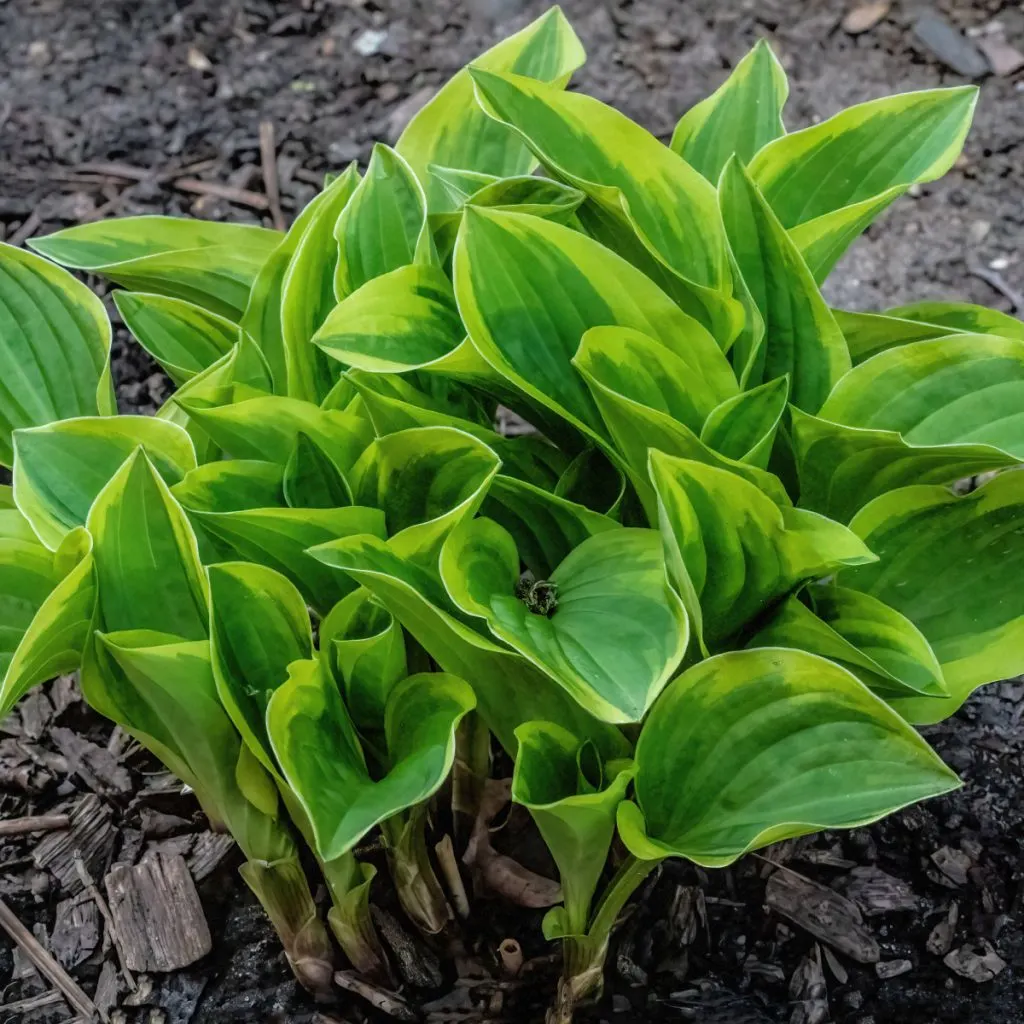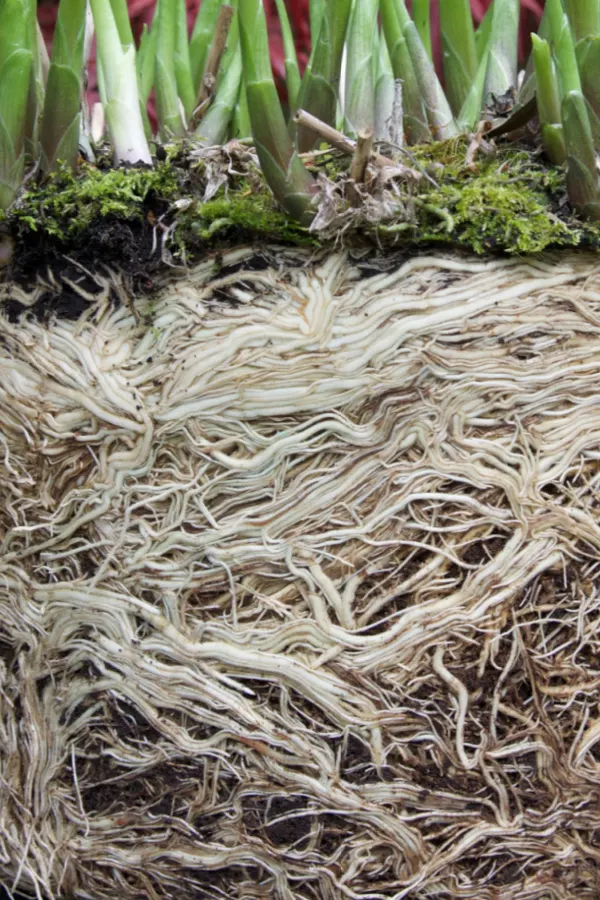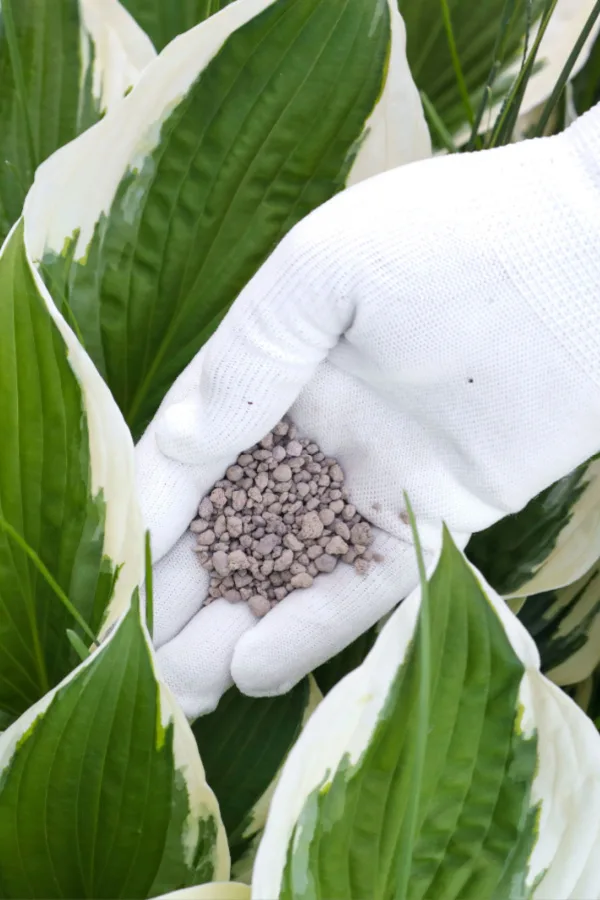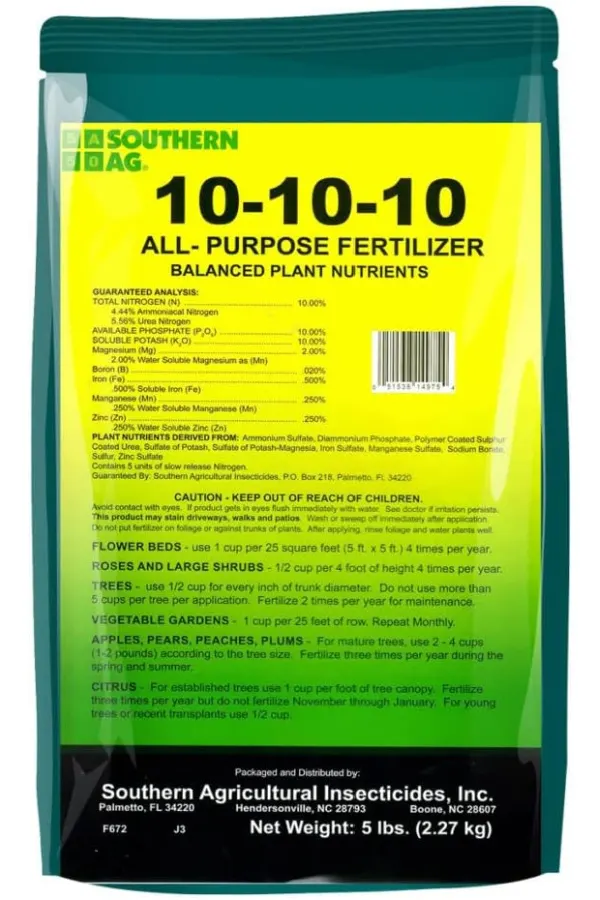Did you know that early spring is the perfect time to fertilize your hostas to power them up and get them ready for big, healthy growth all season long?
Hostas are a staple when it comes to filling home flowerbeds and landscapes with interest and color. With their huge canopy of foliage and tall, wispy, blooms that appear in mid to late summer, the perennial can be quite the showstopper.
But if there is one drawback to hosta plants, it’s that the plant’s foliage often fails to stay strong and healthy all season long. And once those big leaves begin to fail, it can make for quite the unsightly look for your flowerbeds.

The good news is that with just a little bit of spring care and fertilizing, you can all but ensure your hostas have everything they need to maintain strong growth from spring until fall – and keep their leaves looking great all year too. And the best part of all, providing that care and fertilizer is one of the easiest garden chores of all!
How To Fertilize & Care For Hostas In The Spring
Spring Hosta Maintenance
Beyond just fertilizing, late winter or early spring is the perfect time to perform a few key pre-season hosta maintenance chores. And doing these before your hostas begin to sprout can really set the stage for their long term success.
One of the first early tasks is to remove any dead foliage that remains on the plant. It’s actually best to do this in the fall, but if you haven’t, now is the time. Simply pull any decaying leaves and bloom stems from the plant. It’s usually easy enough that clippers are not even necessary.
This not only clears the way for plants to sprout fast, it also help keep pests and disease at bay. All of that old foliage is the perfect place for pests to not only hide but lay eggs and larva. It’s also ideal for mold and mildew to form in the cool, wet weather of spring.
Last but not least, once all of that foliage is cleared away, this is also time to divide any of your hosta clumps that may have become too large for their space. And this needs to be done before fertilizing takes place.

Dividing Overgrown Hostas – How To Fertilize Hostas In Spring
If your hostas have only been in the ground for a few years, you can skip straight to the fertilizing section below. If, however, they have been growing in the same space for five or more years – it’s most likely time to help them out by dividing them. Not only will it help your hostas, it will give you more plants for free too!
One of the biggest reasons hostas become weak or struggle to make it through the growing season is that their root structure has simply grown too large. When this happens, the roots become overcrowded and grow together. And when that occurs, the plant can’t absorb the water or nutrients it needs for good health.
Overcrowded plants usually still sprout well and leaf out strong in the first few weeks. But by late spring and early summer, the plants will start to fail. There just isn’t enough energy in the roots to keep the leaves from struggling. And that lack of energy can also keep the plant from blooming as well.
Listen In To Our Podcast Below On How To Divide Perennials With Ease In The Spring!
The good news is that dividing them in early spring couldn’t be easier. To divide, start by digging a few inches down around the edge of the hosta clump. The roots of hostas are not overly deep, and in the soft spring soil, they come out with ease.
To cut into divisions, first turn the plant over to expose the root clump. Next, use a garden knife or sharp shovel and slice into equal sections. The size of your new plants will be determined by the size of the portion you slice off.
All that is left is to replant. For that, simply dig a hole slightly larger than the clump. To finish, add a bit of compost to the bottom, and set the start down in the planting hole. Cover with soil, making sure the top of the crown is level with the soil. It really is that easy!
Hostas are extremely tough and hardy, and within a few weeks, new shoots will grow and sprout. Best of all, the roots now have plenty of space to grow and absorb nutrients. Now it’s finally time to give all of your hostas a little fertilizer. Fertilizer that will help to power strong growth all spring, summer and fall.
How To Fertilize Hostas In Spring
Hosta plants do not require massive amounts of nutrients, but they do benefit from a low and slow feeding. One that can power both strong foliage and a great bloom set.
For hostas, the best fertilizer of all is a slow release, all-purpose granular fertilizer. All purpose fertilizers contain equal amounts of Nitrogen, Phosphorous and Potassium (N-P-K) along with other key trace nutrients. And that balance is key. Affiliate Product Link: Southern Ag All Purpose Granular Fertilizer 10-10-10
Not only will it not overfeed your hostas, it more importantly gives them the simple, long term energy they need to stay strong and healthy from spring – right up until the first frost in late fall!
The key when selecting your all purpose fertilizer is to choose one with a lower N-P-K range of between 5-5-5 to 10-10-10. These will give low and slow power without overpowering your plants. See our article: Understanding N-P-K Ratios – How To Select The Best Fertilizer For Plants
The actual task of fertilizing is simple. As with any fertilizer, always wear gloves to protect your hands. To apply, sprinkle about 1/4 cup around the base of each hosta. For overly large hostas, 1/3rd cup will be sufficient. To finish, water in the fertilizer to set it in place. Watering also help to activate the fertilizer as well.
Summer Fertilizing – How To Fertilize Hostas In Spring
Hostas can actually benefit from a second light feeding in mid-summer. This will help to keep the plant’s foliage green, especially after it blooms. For this feeding, apply the same amount as in spring, and apply right after the bloom set finishes.

When applying in mid-summer, it’s important to pull back the leaves and allow the granular fertilizer to hit the soil around the plants – and not the leaves. Applying it right to the foliage can burn the leaves. As in the spring, finish by watering the fertilizer in around the plants.
The one time you do not want to fertilize is in the fall. Fertilizing hostas at this point can cause unwanted late season growth. Growth that can put the root structure in danger of overwintering. Once summer passes, simply allow your hostas to grow until the first frost puts them into dormancy. For more spring hosta care tips, be sure to check out How To Split Overgrown Hostas In The Spring – Keep Hostas Healthy & Get Free Plants!
Here is to fertilizing your hostas this spring and summer, and to keeping your plants looking great all season long!
This Is My Garden
Follow Our Facebook Page For Great Gardening Tips And Advice! This Is My Garden Facebook Page
This Is My Garden is a garden website created by gardeners, for gardeners. Jim and Mary Competti have been writing gardening, DIY and recipe articles and books and speaking for over 15 years from their 46 acre Ohio farm. They publish three articles every week, 52 weeks a year. Sign up today to follow via email, or follow along!

